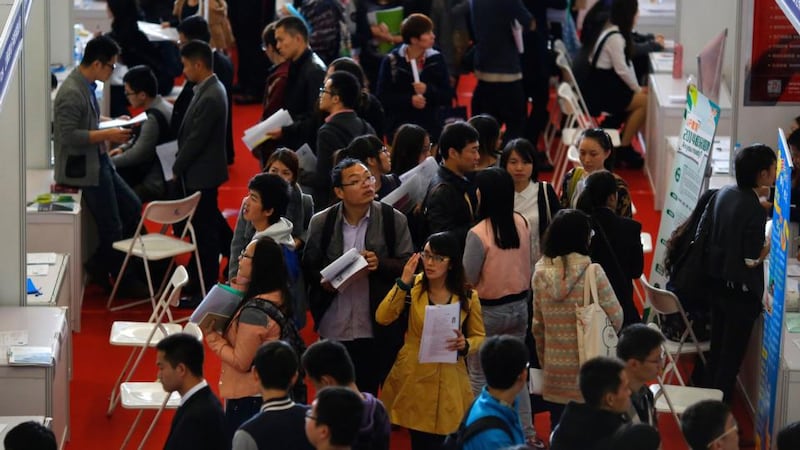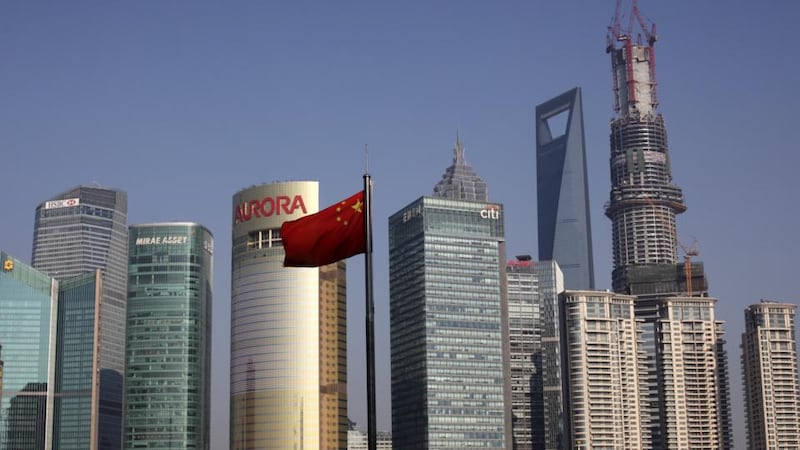Not far from the grey-bricked street where the Chinese Communist Party held its inaugural meeting in 1921, there is a Langham boutique hotel, a Tiffany & Co jewellery shop and a Paulaner German restaurant.
Across the Huangpu river, in the Pudong district that was once a marshland dotted with the occasional factory, including one managed by the writer JG Ballard's father, workers are putting the finishing touches to the Shanghai Tower, the world's second-largest skyscraper and the latest addition to the city's famous skyline.
The story of Shanghai’s remarkable ascent is no longer news, but when choosing a city that best represents China’s powerful economic metamorphosis from a closed agrarian society into the world’s second largest economy, Shanghai is still the city that has it all.


Since its opium-sprinkled heyday during the Jazz Age, when it was “The City of Blazing Night” or, more notoriously, “The Whore of the Orient”, it has always been an outrider.
One could have chosen Shenzhen, just across the border from Hong Kong, transformed in three decades from a fishing village into a booming metropolis of 10 million. Or Chengdu, the western capital of Sichuan province powering ahead on the back of government "Go West" programmes and investment by Intel and other Fortune 500 firms. Guangzhou. Beijing. Dalian. Qingdao. All bear testament to China's astonishing rise.
But the country's financial hub is the one that will most keenly illustrate how China faces the challenges of the future as the economy slows, and as such is a key point in President Michael D Higgins's visit next week.
The skyscraper in China has come to occupy a similar position to its status Chicago at the turn of the 20th century, a symbol of unstoppable progress, of rising wealth.
When the Shanghai Tower reached its full height of 632 metres this year, the Communist Party's official organ, the People's Daily, ran a photo showing workers celebrating the completion of the building, lest we forget that China is still a socialist country.
Flagging economy
Not far from where the edifice towers over China’s biggest city, Shanghai’s bourse has just become the world’s second largest stock market for the first time in three years, as investors feel confident the government will invest in stimulus schemes to kickstart the flagging economy.
China’s economy is slowing to an expected 7.4 per cent growth this year and the country faces challenges of government and corporate debt. Economic growth is on track for the weakest annual pace in 24 years. The days of double-digit percentage expansion are gone, although many governments the world over would envy rates of expansion like 7 per cent.
There remains stunning wealth in Shanghai, and in China more broadly, and the new rich are young. Rupert Hoogewerf, publisher of the Hurun Report, points out that China's millionaires and billionaires are getting younger all the time. "The average age of the country's billionaires is only 40," he remarked at a forum in Guangzhou.
What impact have rising incomes had on people’s lives, and what has been lost by these fresh riches?
For Steve Tsang, at the China Policy Research Institute at the University of Nottingham, increased prosperity in China has come at the cost of clean air, clean water, safer food, integrity of the individual and respect for those less fortunate than oneself. “It depends on one’s perspective and sense of priorities. In material terms most people have benefited and have better access to the conveniences of modern life. But the air one breathes, water one drinks, and safety of food one eats are all worse – unbelievably worse compared to 30 years ago,” says Tsang.
“Doctors are better trained, and hospitals are better equipped, but one has no access to this superior medical service unless one can pay, in contrast to the ‘bad old days’ when poor heath service was in principle universally available if you could physically access it. Now one can see it but may not be able to get it if one can’t afford it.”
Certainly China’s dramatic economic growth of the past decades has been marked by little, if any, political change. While the economy has forged ahead, the ruling Communist Party remains stubbornly opaque in how its decisions are made, and if anything attitudes to western-style democracy have hardened.
Communist Party
The media remains tightly in the grip of the Communist Party. Economic engagement with China was supposed to be an engine for greater freedom, and yet dissenting voices online are muzzled; anyone challenging the rule of the party risks prosecution for subversion.
Countries dealing with China tend to take a soft-pedal approach on human rights as they are worried about the impact on trade.
The main focus of reform in China during the tenure of President Xi Jinping, who took office two years ago, has been economic, not political. Coupled with Xi's sweeping dragnet of corrupt officials came a list of major economic reforms.
So far, the jury is out on their success. For the domestic audience, the reform programme has worked. “What sets [Xi Jinping] apart is his market reform mentioned in the 11th third plenary session. In previous administrations, market reform was even going backwards,” says Wang Zhanyang, director of the political department at the Central Institute of Socialism, the famous Communist Party school.
In June, European Union chamber of commerce in China president Jörg Wuttke took a much dimmer view, worrying that Chinese firms were being favoured over their European counterparts despite World Trade Organisation rules calling for level playing fields.
“Almost half our members believe the golden age for multinationals is ending,” he said. “Market access and regulatory barriers cost member companies €21.3 billion, substantially larger than the GDP of Estonia.”
Next week sees China’s annual Economic Work Conference, at which the government is likely to announce a reduced economic growth target of 7 per cent for next year.
Wang Tao, an economist who heads the team at the UBS investment bank, expects the government to accelerate structural reforms in the coming months. "We expect the government to speed up structural reforms, especially pro-growth reforms including deregulation in public services, hukou [residence permit], social safety net and rural land reforms. Financial sector and state-owned enterprise reforms are also set to gather pace," she said. Looking further ahead, she and her team expect GDP growth to moderate further in the next two years because of a slowdown in the property market. The government worries about how slower growth will affect the economy's ability to create jobs. Wang does not expect lower growth to be a problem for the labour market, because 6 per cent-plus growth next year can generate more new employment than 10 per cent growth in 2008 as the economy is larger now.
Yang Ruilong, head of the economics department at Renmin University, believes that in the next 30 years, the speed of China’s potential economic growth will gradually decline and will be determined by technological progress.
“Future economic growth will be driven by two things: technology convergence and institutional convergence. In this context, the Shanghai economy will maintain the mild growth in 2015. The growth might be slightly below the national growth levels,” said Yang.
Last year, the government launched a 29-square km Free Trade Zone, which combines ports, bonded warehouses and other areas, at the edge of the city to help Shanghai compete with Hong Kong and other regional financial powerhouses.
China’s yuan
The FTZ has been low-key since then, as many of the reforms have proven difficult to push through. A major stumbling block has been that China’s yuan currency is not convertible internationally, and until that happens, the FTZ will not be able to compete with London, New York or Hong Kong. But others believe it is merely having a slow start and that Shanghai will again emerge as a beacon of trade and openness, as it has so many times in the past.
Zhang Youwen at Shanghai’s Academy of Social Sciences, is confident that globalisation has opened the door to the city and that profound change, symbolised by the Free Trade Zone, is coming. “The Free Trade Zone in Shanghai marks the transformation and upgrading of China’s national policy of opening up and reform. In the future, the construction of a truly open economy will be highlighted in Shanghai.”
Thursday: Clifford Coonan reports from the most polluted city in China, Xingtai, and looks at government efforts to combat pollution













